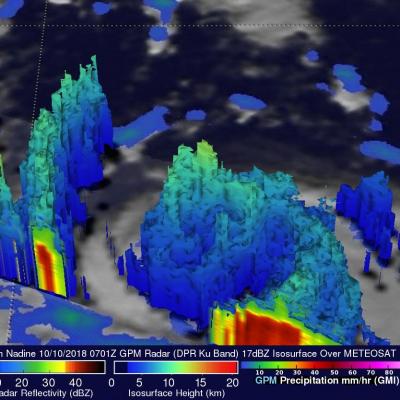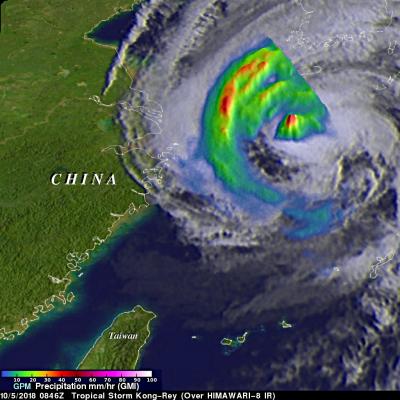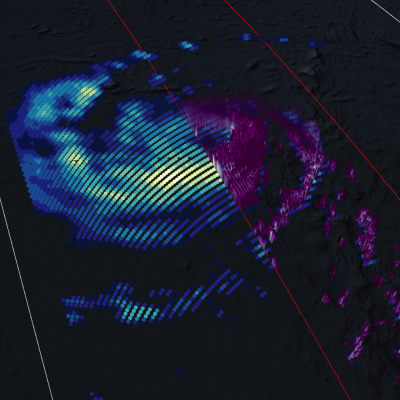GPM Scans Tropical Storm Nadine
Tropical Depression fifteen was located southwest of the Cabo Verde Islands when it became tropical storm Nadine early on October 9, 2018. The GPM core observatory collected significant information about Nadine when it scanned the tropical storm's center of circulation on October 10, 2018 at 3:01 AM EDT (0701 UTC). Nadine was a small tropical storm but GPM's Microwave Imager (GMI) and Dual-Frequency Precipitation Radar (DPR) data revealed that extreme rainfall was occurring in areas around the center of the tropical cyclone. GPM's radar (DPR Ku Band) measurements indicated that rain was





